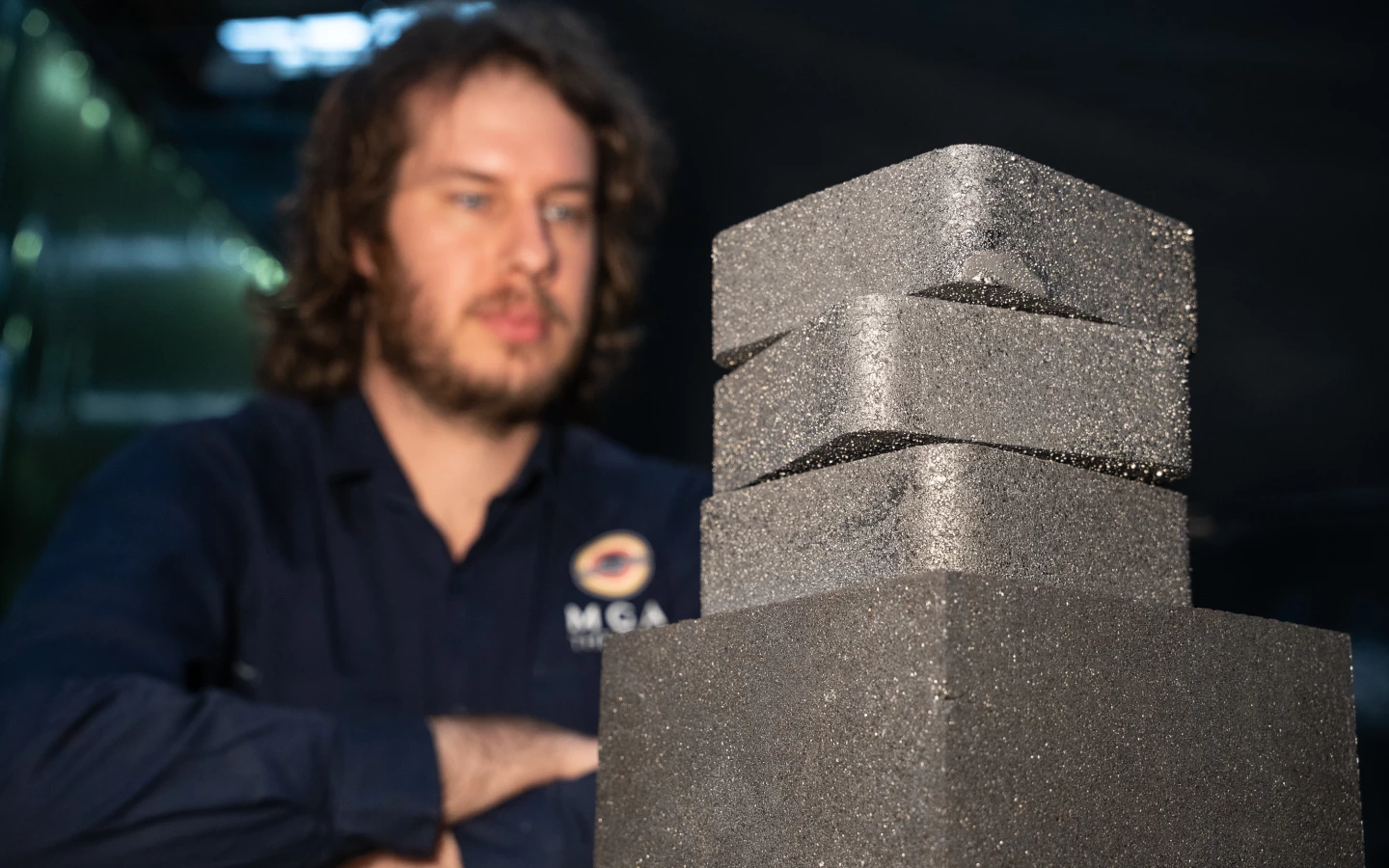Engineers from the University of Newcastle have come up with a surprisingly simple new energy storage system, built around blocks that store thermal energy like melted chocolate chips in a muffin. The team says they’re efficient, scalable, safe, inexpensive, and can be used in existing coal-fired power plants.
Renewable energy is a key component of any plan to reduce our impact on the planet, but storage remains a major hurdle to making these systems viable. Recent solutions include Tesla’s huge lithium-ion batteries, or storing energy in unconventional forms like molten salt or silicon, heavy rail cars on steep inclines, and huge blocks suspended in mineshafts or stacked in towers.
And now the list has a new entry – Miscibility Gaps Alloy (MGA) blocks. Measuring just 30 x 20 x 16 cm (11.8 x 7.9 x 6.3 in), these bricks are made of materials with high thermal conductivity, so they can easily be heated up to store energy and cooled to release it again as needed.
To do this effectively, the blocks are made of two main components. There’s a solid matrix that holds it all together in the brick shape, and embedded throughout that are particles that melt. The team describes the design as similar to a chocolate chip muffin.
“Imagine the matrix is the cake component, which holds everything in shape when heated and rapidly distributes that heat,” says Mark Copus, an engineer on the project. “The other particles, represented by the choc chips, melt and store thermal energy through the solid to liquid change phase.”

The idea is that these MGA blocks could be heated up using excess energy from renewable sources during peak output times, and store it for when demand spikes. Or they could be stacked up inside other power plants, to help recycle waste heat back into the system.
The thermal energy they release can be used to superheat water into steam to run turbines, without having to burn coal. That means the MGA blocks could be retrofitted into retired or retiring coal-fired power plants, to smooth out the transition to renewable energy. As a bonus, that also removes the need to build new facilities or decommission old ones and doesn’t require an upgrade to the grid infrastructure.
“Emissions from coal-fired power plants account for the single largest source of greenhouse gases that cause global warming,” says Professor Erich Kisi, co-founder of MGA Thermal. “Transitioning coal-fired power plants is a win-win to deliver clean baseload power, while also helping to prevent job loss from power plant closures.”

The team says that the MGA blocks have a range of other advantages. The system is easily scalable by just adding extra blocks, potentially storing up to thousands of megawatt hours, and they’re made from inexpensive and abundant materials, so they apparently cost 10 percent of the price of a lithium battery of the same size, while reportedly still outputting the same amount of energy. Those materials are also non-toxic and bring no risk of exploding or leaking harmful chemicals.
MGA Thermal is establishing a manufacturing plant in New South Wales to scale production of the blocks to commercial levels and has partnered with Swiss company E2S Power AG to begin designing systems to repurpose European coal-fired power plants to use the new blocks.
The blocks are described in more detail in the video below.
Source: University of Newcastle






